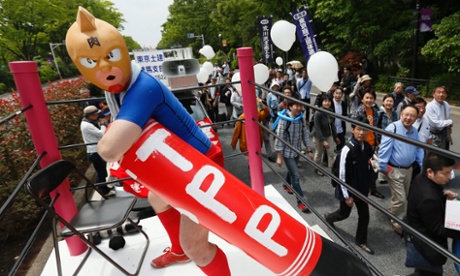Prabha Sridevan in The Hindu
No one can attack India’s well-founded Intellectual Property regime as being weak merely because a drug that is claimed to be an invention fails the test of law
India and its intellectual property (IP) laws have been the subject of sharp criticism recently. Now, there is talk of the government invoking emergency provisions with regard to Dasatinib, a cancer drug. The decibel level may go up several notches.
Let us look at our law. The sovereignty of a country includes its power to make laws. Any person who pursues commercial interests in another country must submit himself/herself to the laws of the country. No one can attack our regime as being weak only because his/her invention did not stand up to the test of our legislation. Nor can India be accused of robbing Peter to pay Paul. It sounds romantic, but it is still robbery.
The Novartis case and the Nexavar case of compulsory licence (CL) are what have impelled this attack. Innovation and invention have speeded up in myriad ways in the last few decades and our country had committed itself to the obligations under the Agreement on Trade-Related Aspects of Intellectual Property Rights. Therefore, it was necessary for India to revisit its patent law; in 2005, the Indian Patents Act was amended, Section 3(d) being one of the amendments. It was the basis of the Novartis case.
TRIPS recognises that members have the right to use/adopt measures to protect public health so long as they are consistent with TRIPS. A recent study notes: “Policy makers in developing and developed countries need to base their implementation of intellectual policy rules on these pro-public health and pro-access principles.” The Doha Declaration is an affirmation of the right to use the flexibilities in TRIPS, especially by developing and less developed countries, regarding access to medicine. The language of the Doha Declaration emphasises the importance of implementing and interpreting the TRIPS Agreement in a way that supports public health.
“The TRIPS agreement does not limit the grounds on which compulsory licences can be granted, and does not prevent patent applicants from having to demonstrate enhanced efficacy for their allegedly new and useful inventions. There are many problems affecting access to and rational use of medicines in India but the provisions within the country’s patent laws, if more extensively and properly applied, should help rather than hinder such access. India’s laws and experiences could provide a useful example for low-income and middle-income countries worldwide.”
About patentability, not price
In Novartis, the Supreme Court said that while harmonising the patent law in the country with the provisions of the TRIPS Agreement, India had attempted to balance its obligations under the international treaty and its commitment to protect and promote the public health considerations of people in the country and elsewhere. The ‘thorn in the flesh’ Section 3(d) had been challenged by Novartis before the Madras High Court earlier. But the court upheld its constitutionality and rejected the attack on the grounds of vagueness and arbitrariness. Novartis did not file an appeal against that judgment. Novartis claimed a patent for Gleevec, a cancer drug which was refused. Novartis then appealed to the Supreme Court.
The intellectual property of the inventor lies in the invention which is claimed to be novel, inventive and patentable. The patent is a creature of law by which the state bars public access to that invention for a fixed period. The economic reward from the invention is earned during this time after which it goes to the public domain. Section 3(d) is a test of patentability. With reference to Gleevec, it is enough to know that 3(d) inter alia says that in the absence of evidence of enhancement of known efficacy, the mere discovery of a new form of a new substance is not an invention deserving the grant of patent. Imatinib Mesylate was the known substance and Novartis claimed a patent for its (the substance) beta-crystalline form.
The Supreme Court asked: “Now, when all the pharmacological properties of beta crystalline form of Imatinib Mesylate are equally possessed by Imatinib in free base form or its salt, where is the question of the subject product having any enhanced efficacy over the known substance of which it is a new form?” If an invention fails the 3(d) test, it means there was no inventive step. There was no intellectual property in the alleged invention, and nothing that could be stolen. Our lawmakers meant to check any attempt at repetitive patenting or extension of the patent term on spurious grounds, and blocked attempts to keep an invention “evergreen.” If those who attack the Indian patent regime claim that a minor tweaking of chemicals is a giant step forward for an invention, then our legislators begged to differ. The Supreme Court said that it was not ruling that all incremental innovations were non-patentable and that every case would be examined. Our law says that new forms of known substances which do not have enhanced efficacy are in effect advances without real innovation. Therefore, Section 3(d) is actually a catalyst for genuine inventions.
The Supreme Court said that Novartis had attempted to get a patent for a drug which would otherwise not be permissible under our law. Filtering doubtful patents is the strength of our law and not its weakness. The Novartis judgment was not about price but about patentability.
Let us look at the compulsory licence (CL) case, i.e. Bayer vs. NATCO. The mechanism of CL is essentially about balancing patent rights with access to medicine. The words “social and economic welfare,” “public health,” “national emergency” and “public health problems/crises” used in the Act are all pointers to the CL provisions being centred around access to medicine.
A CL is granted subject to three conditions; one of them is about price. The reasonable requirement of the public with regard to the invention should be satisfied. The price at which it is made available should be reasonably affordable. It should be worked in India. A CL may be granted if the answer is a “no” to any of the three conditions. The interpretation of the word “working” by the Controller-General was criticised. It is incorrectly projected that the CL was granted on this score alone. Bayer failed in the other two tests. As far as working is concerned, the question is this: should the inventor manufacture the invention locally or is it sufficient to import it? The Controller held that “working” meant local manufacture to a reasonable extent. The Intellectual Property Appellate Board (IPAB) said that “working” could in some cases mean local manufacture entirely, while in others, only importation, and that it would depend on the facts and evidence of each case. “Working” is not defined in the Act. This issue will be settled by the superior courts on review. The power of review by the superior courts is sufficient to show that our law provides for safeguards.
Compulsory licence
Even in the U.S., it is believed that CL would be a beneficial addition to its patent system, would not significantly impact the incentives for innovations, and that, “a compulsory licensing provision would ensure that the American public is adequately supplied with a product. If the patentee is unable to produce enough supply to meet the demand for the product, another producer should be able to license the product to meet the demand.” This is precisely what our law says!
In all these years, there has been only one instance of the grant of compulsory licence. In fact it was refused recently for Dasatinib, the drug that is now in the news. And Section 3(d) has been invoked by our patent office only rarely. If Gleevec was refused a patent, it is only because it failed the test of Indian law. Refusal is not an act of robbery, for it means there was no invention and hence no property in the first place. There is really no case made out for there being a weakness in Indian law. The pharmaceutical industry’s anxiety behind the clamour against Indian law cannot be on account of any inherent weakness in our law, but only because other countries will follow it.
(Prabha Sridevan is a former judge, Madras High Court.)






